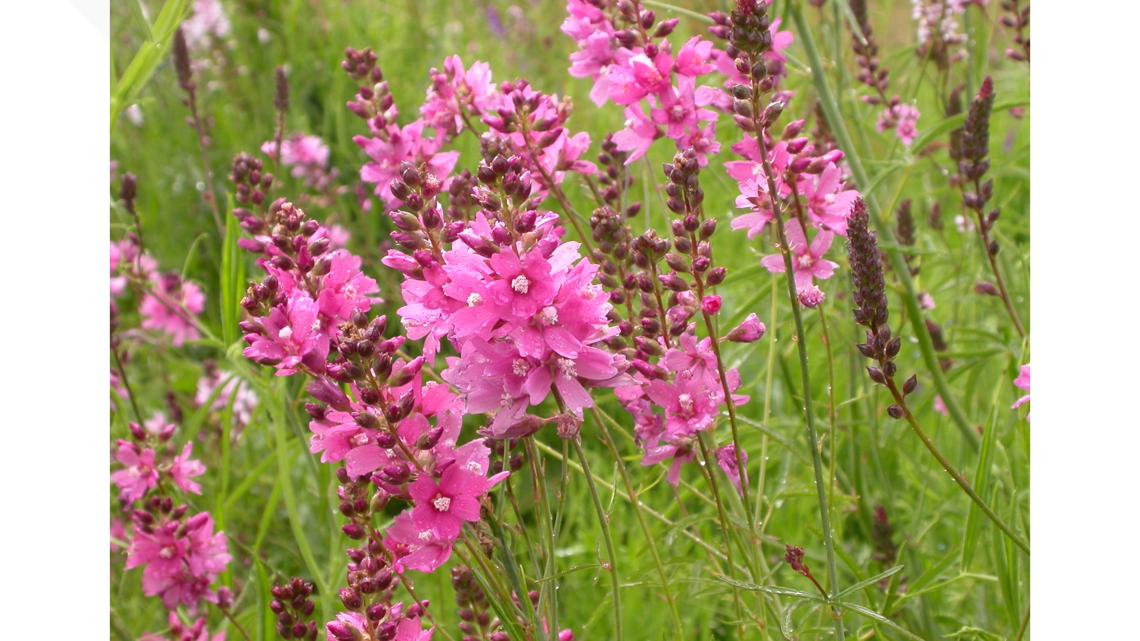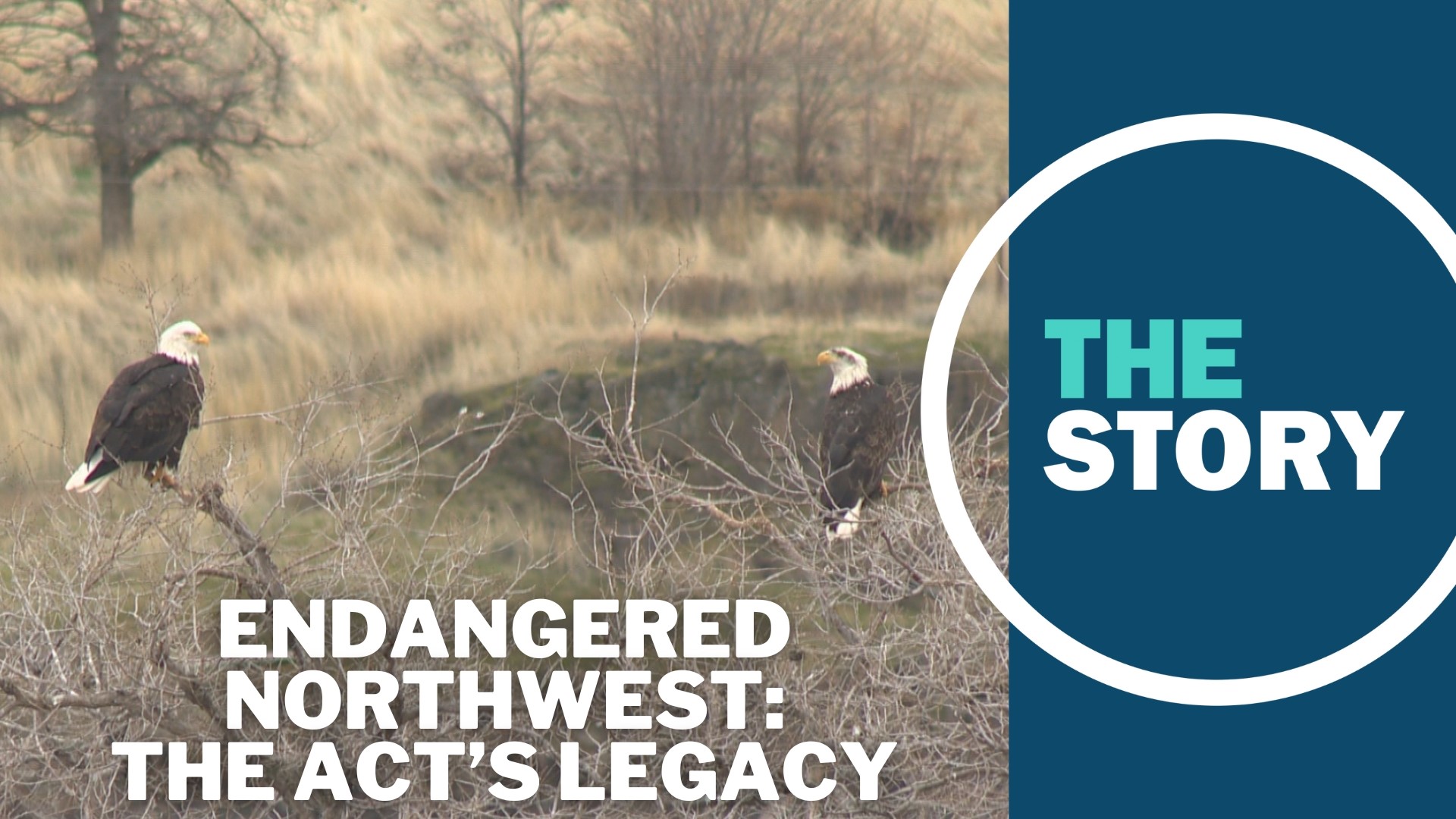PORTLAND, Ore. —
Across the Northwest — from the forests of the coast range, to the mountains and high prairie, to the rivers that cut through them all — there are few parts of the region that have been untouched by the Endangered Species Act.
And the implementation of the act has come with no shortage of controversy. Protections for Northern spotted owls touched off a political firestorm in the '80s and '90s. The return of gray wolves ignited long-dormant conflict with ranchers. Recovery of Pacific salmon, species besieged by threats at nearly every turn, remains a vexing problem.
Protections for each of those species, and many more listed under the act, have far-reaching implications for the people who share the land with those plants and animals. Paul Henson, former state supervisor with the U.S. Fish and Wildlife Service, said the act often brings together two conflicting quintessential American philosophies.
“Two very fundamental American ideals come crashing together. One is this concept of Teddy Roosevelt's Wild West, wildlife, preserving that,” he said. “And private property rights. Private property rights are a very American ideal. And how do you reconcile those two?”
At the heart of that conflict lies a few important questions. For all the strife and controversy, the sacrifices and trade-offs, has the Endangered Species Act been successful? Are any of the protected species better off now than they were when they were listed?
Like most complicated questions, it depends on who you ask.
How to define success
The point of the Endangered Species Act is to identify plants and animals that are at risk of extinction and create a plan to keep them around.
By that definition, Henson said it’s hard to argue the act hasn’t worked.
“The ESA, the Endangered Species Act, is an unequivocal success,” he said.
Kim Kratz, who helps oversee salmon recovery as an assistant regional administrator for the National Oceanic and Atmospheric Administration, echoed those sentiments.
“I think that the Endangered Species Act has had a pretty significant role in keeping these populations from going extinct,” he said.
That’s not exactly a surprising response coming from two people charged with implementing the act, but Henson explained his reasoning.
“It's stopped extinctions,” he said. “It impressed upon the country the need not just to keep species from going extinct but preserve the habitats, or in the in the language of the act the ecosystems, upon which they depend."
But for the people who are directly affected by the act, opinions are a little more mixed.
Rob Klavins, eastern Oregon field coordinator for Oregon Wild, has been working on wolf conservation since the canids returned to the state nearly 15 years ago. He said the act has been effective in some respects, but lacking in others.
“The Endangered Species Act has been successful in making species not go extinct,” Klavins said. “It hasn't been as good at getting species to biological recovery — but to the extent it's fallen short there, it's not because the Endangered Species Act is broken. It's because it's starving. We need more protections for wildlife, especially in an age of climate change and increasing development.”
John Williams, chair of the wolf committee for the Oregon Cattlemen’s Association, said the act is overly broad, leaving it susceptible to cooption by special interest groups.
“The sledgehammer of the Endangered Species Act has been hijacked by people with agendas and that’s usually when we get bad management,” he said.
Donella Miller, fisheries science manager for the Columbia River Inter-Tribal Fish Commission and a citizen of Yakama Nation, has been working on salmon recovery for most of her adult life.
In her view, the act has tremendous promise, but she’s still waiting to see it realized.
“I think it has the potential that it could be the most powerful tool that we have to protect species from extinction. But, you know, we've really yet to see the success of that,” she said. “All of these species listed in the '90s in the Columbia River basin, how many of those have ever been restored?”
It’s true that many species listed under the act continue to struggle, but that doesn’t mean there haven’t been wins.
Remarkable recoveries
It wasn’t so long ago that bald eagles appeared headed for extinction. Today, they number close to 300,000.
“I see bald eagles flying over my house here and I'm 2 or 3 miles from downtown Portland,” Henson said. “I see them all the time, and 20 years ago we thought eagles were also going to go extinct.”
The Borax Lake chub, a species that lives only in a tiny Oregon lake, was first listed as endangered in 1980. It was delisted in 2020, becoming the first fish to come off the list due to recovery, after land surrounding the lake was set aside for conservation.
And it’s not just birds, mammals and fish.
Nelson’s checkermallow, a flowering plant with bright pink blossoms that grows in the prairies of the Pacific Northwest, staged a remarkable comeback and was taken off the endangered species list earlier this year.


That was only possible “because enough private land owners have provided habitat for that plant,” Henson said.
And there’s reason for some guarded optimism for the northwest’s more high-profile endangered species, too.
Last month, the U.S. Fish and Wildlife Service announced a proposal to kill some 400,000 barred owls over the next 30 years to help Northern spotted owls. That might not be welcome news if you’re a barred owl, but studies have shown that in habitat where barred owls are removed, spotted owl populations have stabilized.
Talks continue around the breaching of four dams on the Lower Snake River, a move tribes and salmon advocates have been pushing for decades to improve prospects for the imperiled species.
The idea still faces strong criticism from some in the northwest who argue the removal of the dams would be disastrous for hydropower generation, shipping and irrigation.
For wolves, Oregon wildlife officials announced earlier this year that the state would be exporting some of the animals to Colorado, where voters approved a plan to reintroduce the species there.
But despite the success stories and the reasons for guarded optimism, the is still a lot of room for improvement in the Endangered Species Act.
‘There's too much at stake’
Doug Heiken, who has been working on spotted owl conservation since the bird was listed more than 30 years ago, said the Endangered Species Act has some pretty clear limitations.
“It's pretty good at keeping the species just hovering just above extinction,” he said. “But it's not terribly great at recovering species and getting them to be a really healthy population again.”
For Henson, he’d like to see changes to the act that would incentivize conservation well before a species ends up on the endangered list.
“The moment where you get the most conservation done is before something's listed, but when a listing is imminent,” he said. “So how do you kind of impress upon folks, you have this urgency, but you don't get locked into an inevitable path of having to list.”
A more proactive approach to protecting vulnerable species will only become more important as threats to wildlife increase with climate change and human development into wild spaces.
It can be easy to get discouraged, Kratz said, but the consequences of inaction, as he sees them, are unacceptable.
“There's too much at stake to allow these to continue to decline and not to invest in long term recovery, to get disappointed and not invest in long-term recovery strategies,” he said.
When Klavins thinks about endangered species, he said he often thinks about a quote from Millie Beattie, the first woman to run the U.S. Fish and Wildlife Service, who said, “What a country chooses to save is what a country chooses to say about itself.”
That’s the ethos that makes his work worth it, even when it comes with a considerable amount of strife.
“I think it says something good about us if we can make room on the landscape and in our hearts for all native wildlife, not just to exist, but to actually thrive,” he said. “Especially those species that challenge us the most.”
This is the last chapter of "Endangered Northwest," a four-part series on the impact of the Endangered Species Act. You can find each story in the links below.
Part 1: The Northern spotted owl
Part 2: Reintroducing gray wolves
Part 3: Decline of Pacific salmon
Part 4: Has the ESA worked?

